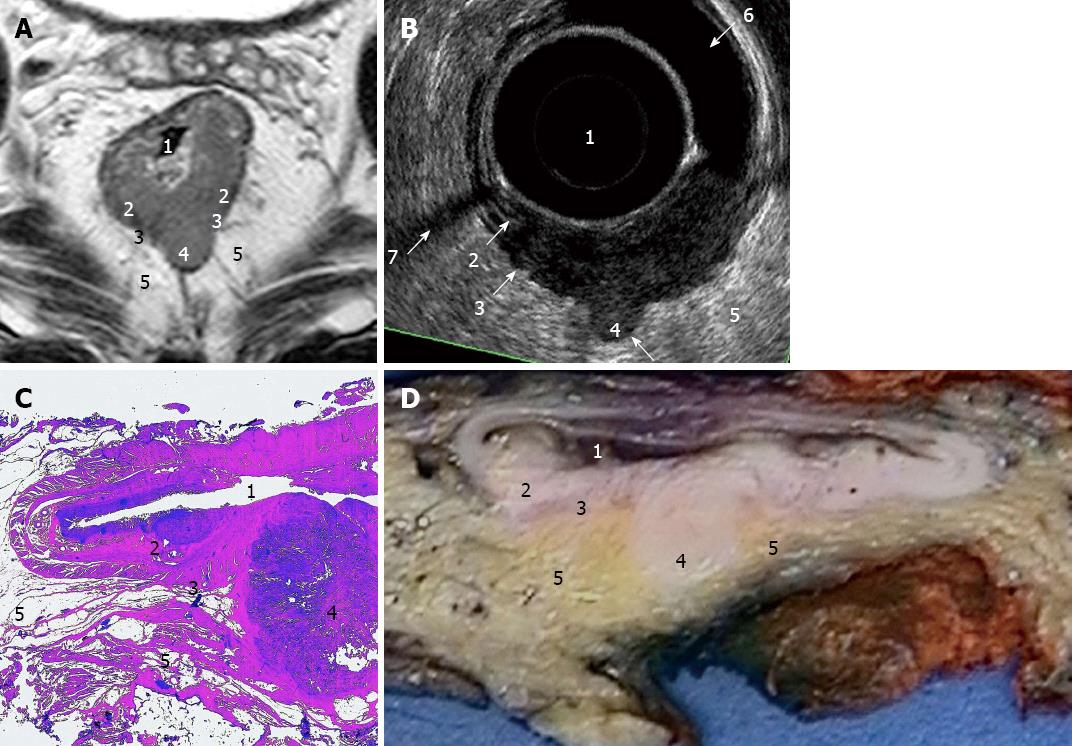Copyright
©2013 Baishideng Publishing Group Co.
World J Gastroenterol. Jun 7, 2013; 19(21): 3263-3271
Published online Jun 7, 2013. doi: 10.3748/wjg.v19.i21.3263
Published online Jun 7, 2013. doi: 10.3748/wjg.v19.i21.3263
Figure 2 Images of a stage II (T3N0) rectal tumour.
The numbers denote the bowel lumen (1), the submucosal layer (2) and the interface (3) between the muscularis layer and the perirectal tissue (5) and a definite protrusion (4) through the muscularis layer. A: Magnetic resonance imaging gives a good view of the surrounding structures; B: Endosonography (ERUS) shows the bowel lumen (1) expanded by a condom filled with water and details of the bowel wall with an interruption of the submucosal layer (2). The artefacts from an air pocket (6) and some bowel remnants (7) can be a problem in ERUS; C: The histologic slice (hematoxylin and eosin staining); D: The specimen after the first part of fixation and cutting.
- Citation: Swartling T, Kälebo P, Derwinger K, Gustavsson B, Kurlberg G. Stage and size using magnetic resonance imaging and endosonography in neoadjuvantly-treated rectal cancer. World J Gastroenterol 2013; 19(21): 3263-3271
- URL: https://www.wjgnet.com/1007-9327/full/v19/i21/3263.htm
- DOI: https://dx.doi.org/10.3748/wjg.v19.i21.3263









